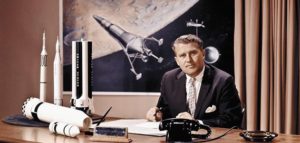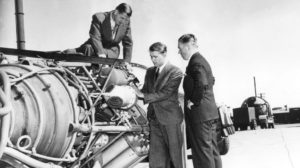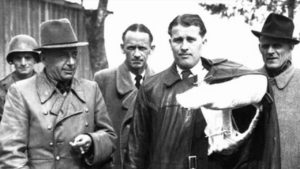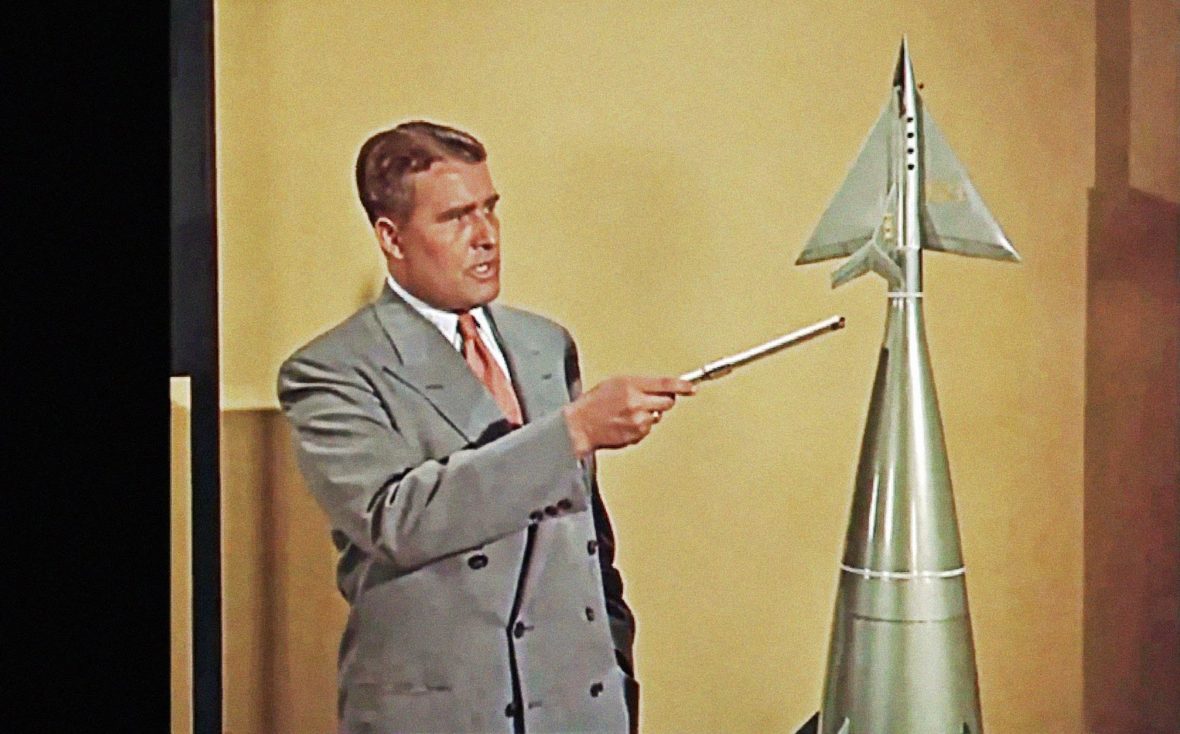Wernher Magnus Maximilian Freiherr von Braun was a German, and later American, aerospace engineer and space architect. He was the leading figure in the development of rocket technology in Germany and the father of rocket technology and space science in the United States. Take a look below for 27 more interesting and fascinating facts about Wernher von Braun.
1. In his twenties and early thirties, von Braun worked in Nazi Germany’s rocket development program.
2. He helped design and develop the V-2 rocket at Peenemunde during World War II.
3. Following the war, he was secretly moved to the United States, along with about 1,600 other German scientists, engineers, and technicians, as part of Operation Paperclip.
4. He worked for the United States Army on an intermediate-range ballistic missile program and he developed the rockets that launched the United States’ first space satellite Explorer 1.
5. His group was assimilated into NASA, where he served as director of the newly formed Marshall Space Flight Center and as the chief architect of the Saturn V super heavy-lift launch vehicle that propelled the Apollo spacecraft to the Moon.

6. In 1975, von Braun received the National Medal of Science.
7. He advocated for a human mission to Mars.
8. Von Braun was born into a noble family in Wirsitz, which is now known as Wyrzysk, Poland.
9. His father was the Minister of Agriculture in the Reich Cabinet.
10. When von Braun was confirmed in the Lutheran Church, his mother gave him a telescope. It’s at this time that he fell in love with astronomy and went on to study physics and mathematics.
11. In 1915, von Braun’s father accepted a position in the Ministry of the Interior.

12. Von Braun was a gifted musician on the piano and the cello and was a student of Paul Hindemith.
13. In 1925, he entered a school at Ettersburg Castle and in 1928, he transferred to the Hermann-Lietz-Internat school.
14. In 1930, he entered the Technische Hochschule in Berlin, where he joined the Spaceflight Society.
15. In 1932, he earned a Bachelor’s degree in mechanical engineering.
16. In 1934, he received a Master’s degree in physics from the Friedrich Wilhelm University.
17. On November 12, 1937, he joined the Nazi Party. He would later claim that his membership in both the Nazi Party and the SS were coerced. Furthermore, when the Nazi Party came to power in 1933, the military uses of rocketry was of major interest to them.
18. On July 27, 1934, von Braun received his PhD with a thesis entitled Construction, Theoretical and Experimental Solution to the Problem of the Liquid Propellant Rocket. His thesis was classified by the army and wasn’t released until 1960.

19. By 1934, von Braun’s team had launched two rockets to altitudes of two miles.
20. Before World War II began, German scientists had been in contact with Robert Goddard and asked him technical questions about their own efforts.
21. During 1936, von Braun’s team worked on using rockets to propel aircraft and in June 1937, they tested the first primitive jet airplane.
22. Von Braun’s rocket facility used slave labor from the nearby concentration camp and it’s claimed that he visited the facility frequently and was aware of the brutality and deaths due to the slave labor.
23. In 1945, knowing that the war was lost, von Braun and his team located and surrendered to the U.S. 44th Infantry.

24. From 1950 to 1970, von Braun and his team were moved to the U.S. Army’s Redstone Arsenal in Huntsville, Alabama, where they worked on ballistic missiles.
25. On January 1, 1958, the Jupiter-C rocket they developed launched America’s first satellite. This was the first event in the American space program.
26. Von Braun’s primary interest was in spaceflight and at Huntsville, he was finally free to popularize that idea.
27. He wrote numerous articles and worked as a technical director for Walt Disney on movies about space exploration. He also worked on the Apollo program, which sent astronauts to the Moon.




